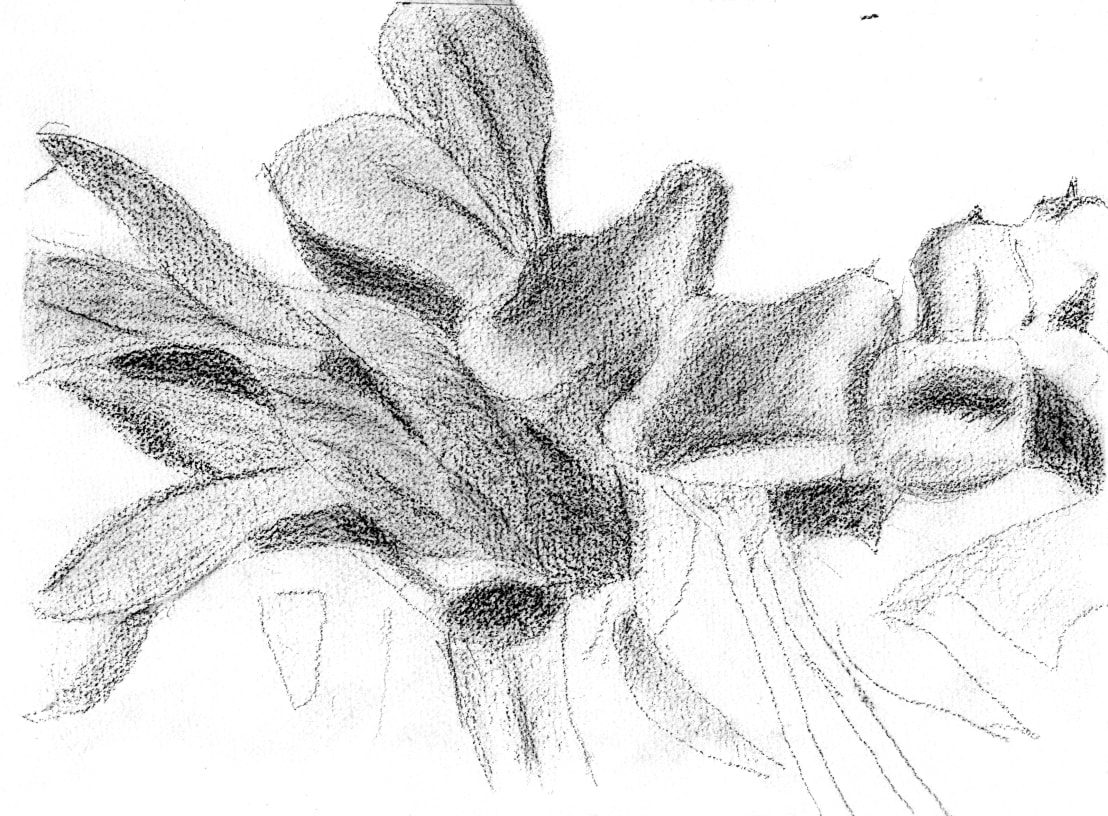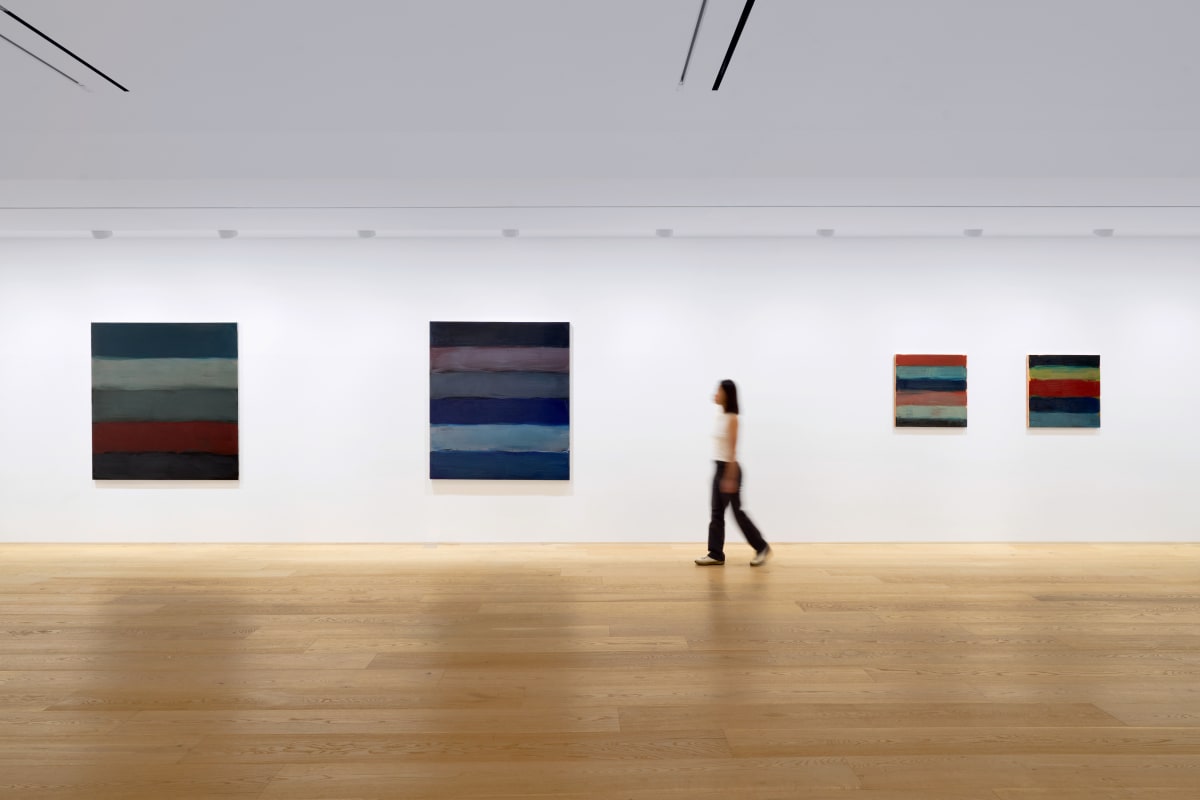How Freud’s Legacy in Psychoanalysis Is Still Inspiring Artists Today
Psychoanalysis has had a lasting impact on popular culture. But as its following has grown, many nuances have been lost. Online quizzes invite browsers to find out if their ex-partners are narcissists; words like “ego” and “unconscious” are used with little connection to their origin. Now, amid the proliferation of therapeutic terms, many artists are going back to the historical roots of psychoanalysis.
Case in point: Malaysian British painter Mandy El-Sayegh’s exhibition “Interiors,” recently opened at Thaddaeus Ropac’s London space, which features an installation inspired by analysts Sigmund Freud and Jacques Lacan. Skin-like strips of fabric hang across the entrance to the ground-floor gallery; the rooms, full of abstract paintings and sound installations, offer a view inside her mind. “There’s a cycle inside my head that I want to express,” said El-Sayegh. “I want it to be like a labyrinth into the body downstairs, and then you go into the brain upstairs.”
The exhibition reimagines Freud’s consulting room with a patchwork of carpets, a lone couch and chair, and, on the walls, large-scale paintings with grid formations that create an enclosed, cell-like feel. El-Sayegh made a recording of her own psychoanalytic session, which has been abstracted using voice notes and bodily noises, and plays through speakers in the space. It feels enticing and claustrophobic, mirroring the intense atmosphere of consulting rooms.
“Analysts have to foster a warm environment to get you to free associate, but these spaces are never neutral,” she said. “What historical contingencies and disciplines is this founded upon? I love the fact that analysis is founded on a fragmented person; the Jews were expelled, [when Freud moved to London] he was running for his life. His room was conceived as a portable installation.”
Rather than Freud, El-Sayegh is most interested in the experimental approach of Lacan and his idea of “scansion,” in which the analyst focuses on phrases their ear is naturally drawn to. For the “Interiors” soundtrack, El-Sayegh worked with Lily Oakes, her ex-partner, who applied this method to create a fractured listening experience that reflects the difficulty of really understanding another person.
The artist (who has a concurrent, dual show with Kader Attia on at Lehmann Maupin, also in London) only encountered psychoanalytic theory at art school. “I didn’t have a model for art or high culture; my parents are working-class immigrants,” she said. “We were given a set of books, Art in Context, and Lacanian theory just clicked. I’m interested in how fragments come together, and the idea of jouissance: this excess enjoyment that can’t be subsumed by discourse. All artists do this but not everyone engages with these theories.”
The artist’s show seems to be part of a wave of artists engaging directly with Freud’s ideas. Later this year, British sculptor Holly Stevenson will be showing Freud-inspired work at Frieze Sculpture, comprising two ceramic ducks guarding an egg that appears to be whole when visitors first encounter it, but reveals itself as eerily sliced open and hard boiled as they move around it. She’s interested in the symbolism of eggs, referencing Freud’s ideas about substitution, in which an object acts as stand-in for something else.
Indeed, Stevenson explained in an interview that her personal psychoanalytic sessions have a profound impact on her practice. “I understand the rigmarole, the wordplay. The fact my grandmother had a pet duck, and they ate it because they were so poor; that my mother rolled over in bed and squished a duckling; that I feel like I’m constantly being squished by my mother. These stories have crept into my personal psychology and I can play with them.”
After volunteering at London’s Freud Museum, Stevenson began a sculpture series reinterpreting the psychoanalyst’s ashtray, which she filled with phallic and yonic forms. “He wasn’t following anyone, which is what makes him such a huge figure,” she said. “He absorbed what was going on culturally. Freud was interested in how to deal with ourselves; how to be alone in a room.”
Next month, a new group exhibition about Freud’s impact on modern and contemporary art will open at Germany’s Kunsthalle Tübingen, entitled “Inner Worlds.” While Freud was famously skeptical of the Surrealists who were drawn to his exploration of the subconscious, this group exhibition promises to present his creative impact through the decades that followed.
“Hardly anyone has changed and broadened the way we think, act, and feel as radically as Sigmund Freud,” said the museum’s director Dr. Nicole Fritz, who co-curated the exhibition. “We show how Freud’s theory helped shape Surrealist art, the existentialist approaches of the post-war period, and feminist stances in postmodernism. Since the 1990s, artists have again drawn on the Freudian theme of the uncanny to describe the present. In the face of a present marked by crises and destruction, these artists’ works increasingly render visible repressed, disturbing aspects of our reality.”
“Inner Worlds” also covers some common criticisms of Freud, particularly his approach to women. Artworks by feminist artists such as Birgit Jürgenssen, Cindy Sherman, and Heidi Bucher challenge the androcentric approach taken by Freud and psychoanalysis more broadly. “He was a child of his time,” said Fritz. “You have to regard his statements in the context of the period in which he lived. Although Freud opened doors for artists, he also kept many doors closed in his time, even to himself, with particular regard to the ‘dark continent’ of all that is feminine.”
Recently, many artists have also turned to the work of Freud’s former protégé Carl Jung, especially as the wider art world has taken an interest in non-secular spiritualism. Tate Modern’s 2023 Hilma af Klint and Piet Mondrian exhibition “Forms of Life” included drawings from Jung’s Red Book, comparing the psychoanalyst’s interest in the irrational with the psychic explorations of af Klint.
Artist Chantal Powell’s sculptures and collages are intimately connected with Jung’s ideas, and she also runs a Jung-themed reading group, “The Red Book Club.” Her work explores the symbolic language of the unconscious. For example, her sculpture Night Journal Study (2021), included in Roman Road’s recent pop-up group show “A Gothic Midsummer,” focuses on the symbol of the ladder as a means of ascent into and out of the subconscious or underworld, and the boat as a means of safe passage in darkness.
“Since the age of reason there has been a growing disconnect between mind, body, and spirit,” Powell said in an interview. “More than ever, we are asking, ‘Why am I here?’ and ‘Where is there meaning?’ Jung offers an antidote to the disconnect and discontent of the age. Artists instinctively work in many ways that Jung encouraged, accessing inner states through archetypal symbols, dreams, and rituals, then concretizing their interactions with the unconscious in physical material or bodily actions.”
In many ways, 21st-century life looks very different from the Victorian world that birthed Freud and his contemporaries, but the artists inspired by their work see parallels. “Freud was radically reconsidering social and moral codes,” said Stevenson. “I think we’re definitely going through that again.” For El-Sayegh, artistic practice is a natural development on the work of psychoanalysis. “A lot of Lacanians and Freudians are very hard-line,” she said. “But there’s a limit to verbal language that the clinic can’t apprehend. I believe in the practice of free association and I think I’m doing it in my practice with material as my language.”


















































































































































































